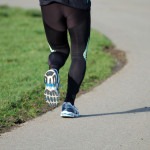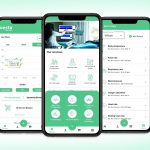Heartfulness Practices are a set of yogic meditative practices having a positive effect on heart rate variability, blood pressure and heart rate. This was the conclusion of this first of its kind study conducted by the National Resource Centre for Value Education in Engineering (NRCVEE) at IIT Delhi, and the Department of Non-Invasive Cardiology, Max Super Specialty Hospital, Saket, New Delhi. The data pointed towards the fact that there was a significant effect of the Heartfulness practices of Cleaning and Meditation on the heart rate, blood pressure and heart rate variability, which is an indicator of cardiovascular as well as overall health.
The authors concluded that a 30-minute session of Heartfulness Meditation and Cleaning produces significant modulation of the autonomic nervous system towards parasympathetic dominance, so as to favourably moderate basic vital parameters. The results also indicate that these practices helped improve the feeling of overall happiness and well-being following the Meditation sessions, without being demanding (See Figure 1).
The findings of the study have been published in the Indian Heart Journal, the official journal of the Cardiological Society of India (Indian Heart Journal 70 (2018) S50–S55). The study was authored by Narendra Kumar Arya, Kamlesh Singh and Anushree Malik, from the NRCVEE, and Rahul Mehrotra, Head, Department of Non-Invasive Cardiology, Max Super Specialty Hospital, Saket, New Delhi.
Commenting on the study, Kamlesh D Patel (Daaji), the Heartfulness Guide, said, “While meditation is now readily recognized as a practical, safe and effective tool to reduce stress and manage health, this research is the first attempt to study Heartfulness practices and their effect on cardiovascular measures. Several studies have shown the beneficial effects of Heartfulness Meditation on physical health, psychological health, emotional intelligence, and sleep etc., but there was a gap in the literature on studies pertaining to the impact of the Heartfulness practices of Cleaning and Meditation on heart rate variability. This study is the first step to filling this vital gap.”
METHODOLOGY:
The study was conducted as part of an on-going research program at the Non-Invasive Cardiology Laboratory of Max Super Specialty Hospital, Saket, New Delhi, and involved 30 volunteers (21 males and 9 females) who have been practicing Heartfulness methods regularly. The volunteers were in the age range of 19-70 years. All participants were subjected to a standard set of procedures while data were recorded on a computer. The entire procedure was performed in three stages of 30 minutes each: Baseline stage, Cleaning stage, and Meditation stage.
The first stage was the Baseline stage where each participant was seated quietly with eyes open. In stage II, participants performed Heartfulness Cleaning, and in stage III the participants performed Heartfulness Meditation aided by Yogic Transmission under the guidance of a Heartfulness trainer.
Heart rate and BP were recorded before and at the end of each stage. A holter monitor, attached with the help of electrodes to the subjects’ chests, continuously recorded the ECG and heart rate variability during the stages. Finally, the trained non-invasive cardiology technician removed the electrodes and the participants filled a feedback questionnaire. The data were downloaded into a computer and analyzed.
Certain psychological parameters were also included in the study to assess overall well-being. Cantril’s Ladder scale, the Scale of Positive and Negative Experience (SPANE) and the Flourishing Scale were used to assess the overall happiness and well-being of participants. A feedback questionnaire was used to assess peace, happiness, enjoyment and effort felt by the participants during the Cleaning and Meditation processes, to support the results as assessed by HRV.
The feedback questionnaire consisted of five questions relating to the experience during stage II and III (Cleaning and Meditation). The questions asked were how enjoyable and how demanding the experience was, and how peaceful and how happy they felt after stages II and III respectively. Participants were asked to rate on a scale of 0 to 10 (where 0 denoted ‘not at all’ and 10 denoted ‘very much’) for the first four questions, while the fifth question required a descriptive answer.
RESULTS:
Table 1: Measurement of heart rate variability during Baseline, Cleaning and Meditation
| Variables | Baseline | Cleaning | Meditation | Comments |
| LFnu
HFnu LF/HF HRmin HRmax |
70.82 ± 14.55
30.86 ± 16.51 3.45 ± 3.40 70.00 ± 6.42 97.77 ± 10.01 |
55.62 ± 15.06
44.37 ± 15.06 1.63 ± 1.30 67.00 ± 8.15 90.33 ± 8.94 |
55.17 ± 16.63
44.83 ± 16.63 1.82 ± 2.19 65.77 ± 7.85 88.80 ± 9.89 |
The reduction in low frequency band (LF) and increase in high frequency band (HF) during Meditation and Cleaning indicates a shift to parasympathetic dominance from sympathetic dominance during these practices. |
LFnu = low frequency normalised unit
HFnu = high frequency normalised unit
HRmin = Minimum heart rate
HRmax = Maximum heart rate
Note: Values are group mean ± SD.
Table 2: Blood pressure recorded at the beginning, at end of Baseline, at end of Cleaning, and at end of Meditation
| Variables | At the beginning | At end of Baseline | At end of Cleaning | At end of Meditation |
| BP (S)
BP (D) |
119.00 ± 17.69
78.33 ± 10.20 |
119.00 ± 17.69
78.33 ± 10.20 |
110.33 ± 15.42
75.00 ± 11.06 |
106.33 ± 16.50
72.33 ± 10.73 |
Note: Values are group mean ± SD.
The researchers found a significant shift in autonomic tone as indicated by the heart rate variability data recorded (Table 1). It was also noted that there was a statistically significant Systolic (S) BP reduction with Cleaning (from 119 to 110 mmHg) and Meditation (from 110 to 106 mmHg). The same effect was seen for Diastolic (D) BP: from 78 to 75 mm Hg with Cleaning and from 75 to 72 mm Hg with Meditation (Table 2). The results were analysed using standard statistical tools.






